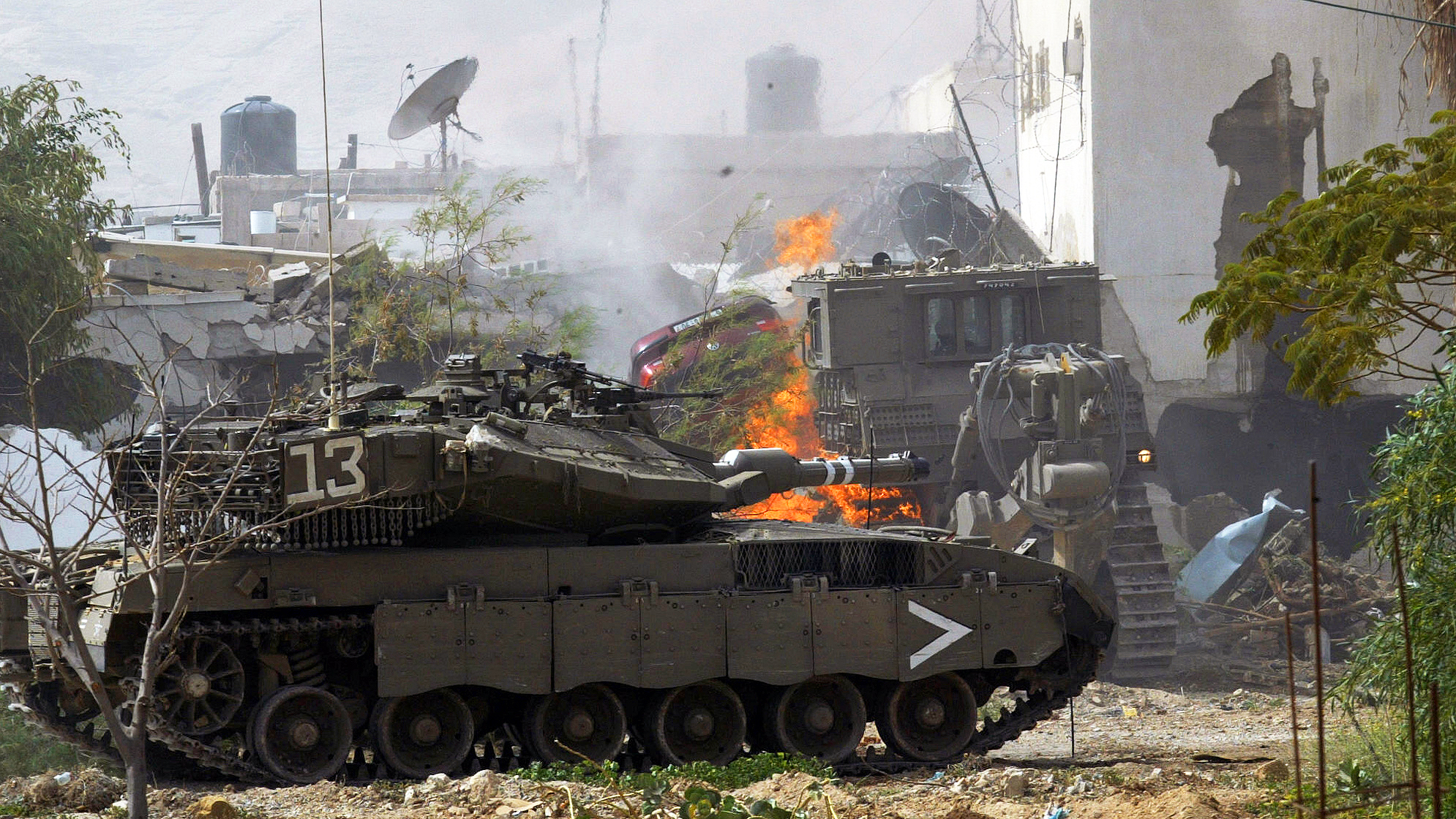When the huge force Israel has amassed is finally given the orders to enter Gaza and destroy Hamas, they will face a deeply dug-in, well-armed enemy with thousands of anti-tank weapons, drones, and small arms on the most complex battlefield there is. Hamas will be fighting from tunnels, sewers, and strong points set up in high-rise buildings and rubble. They will rake incoming troops with machine guns from alleyways and windows, as well as employ heavier weapons from rooftops and prepared cover, and then melt into the urban maze that makes up much of the Gaza Strip. There will be no element of surprise for this sojourn into deeply hostile territory.
Israeli troops “will face the greatest challenge of their lifetime,” John Spencer, chairman of urban warfare studies at the Modern War Institute (MWI) at West Point told The War Zone. “Attacking a defended city like this will be combat in hell. I do believe they can do it, but the cost will be high in urban warfare like this, since they will be attacking multiple cities.”
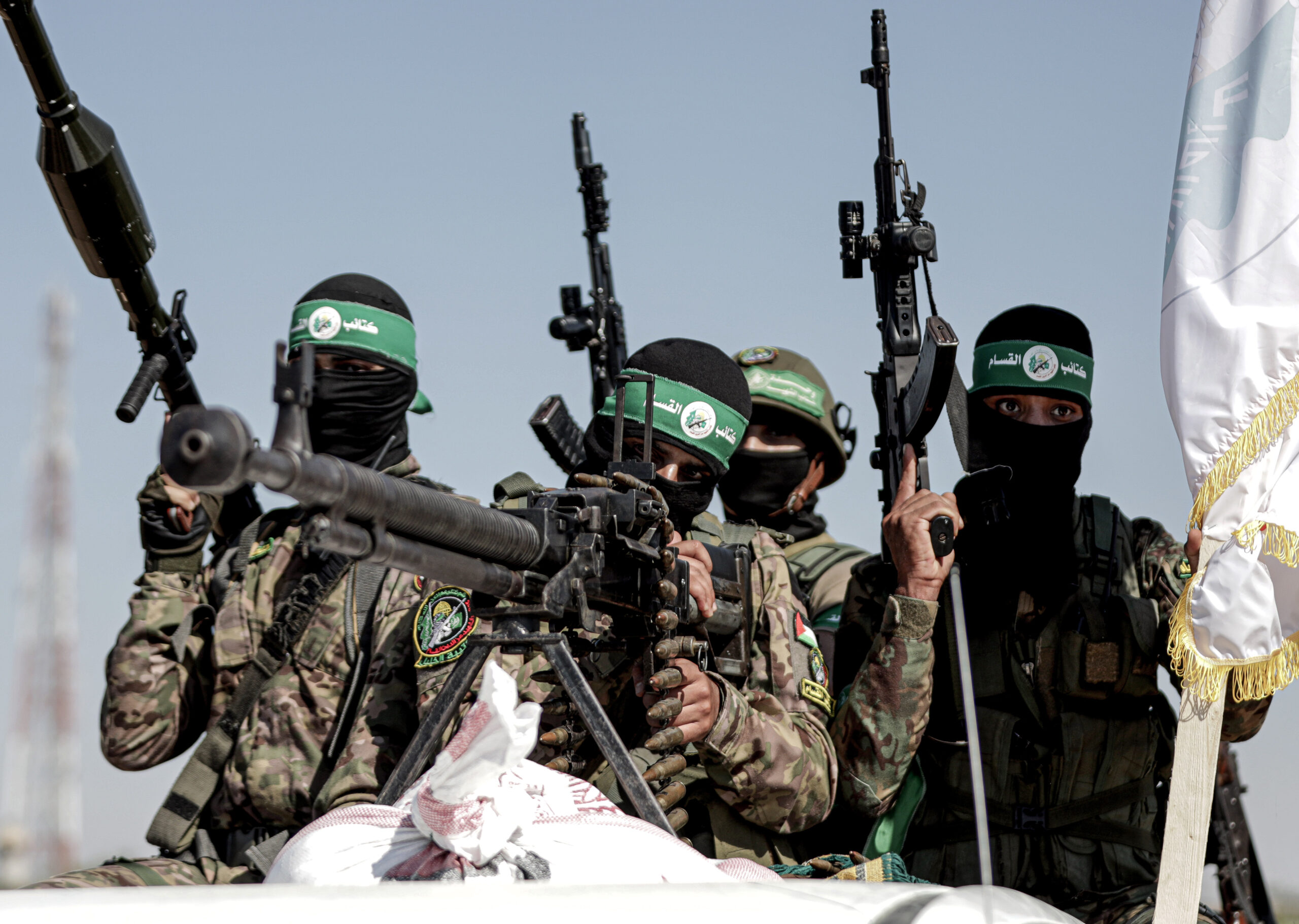
Spencer estimated that Israel has massed about 400,000 troops and some 300-plus tanks for this operation and will likely enter through spots along Gaza’s 35-mile-long border from several directions.
“Of course, the main effort will be Gaza City but they will attempt to surprise Hamas (like we did in 2nd battle of Fallujah) and come from a direction Hamas doesn’t think they will,” Spencer told us.
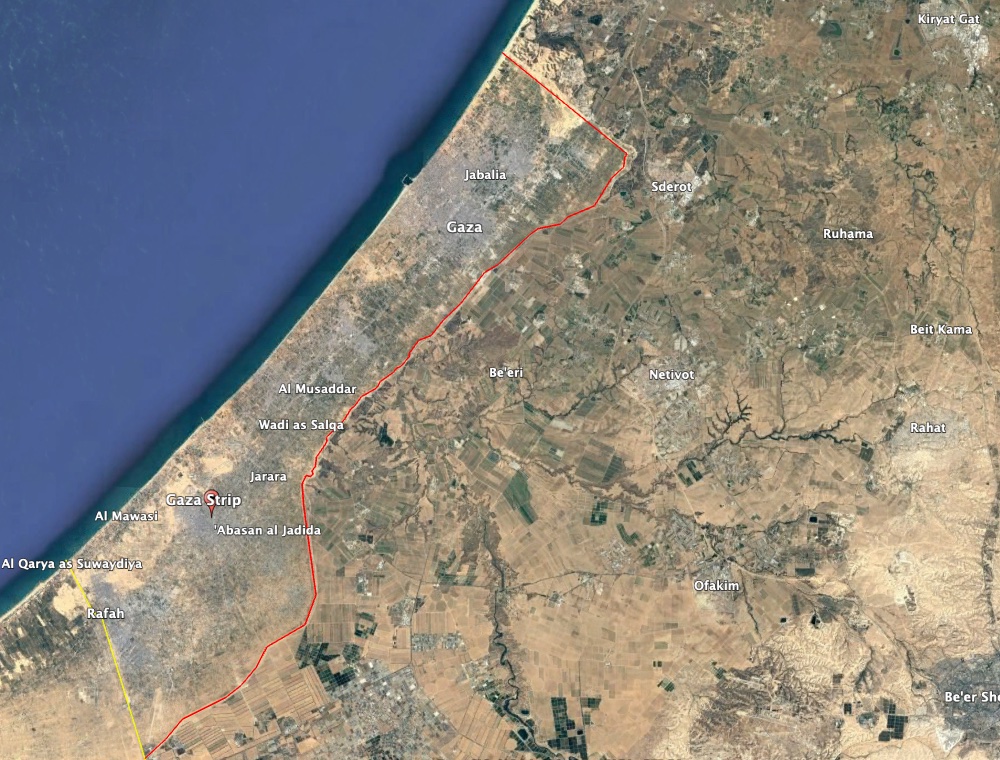
“It will be different than 2014,” the last time Israeli forces entered Gaza, during the 55-day Operation Protective Edge, Spencer said. “It will be at least two simultaneous attacks and likely some feints or deception attacks.”
In an analysis he wrote for MWI published Wednesday, Spencer laid out the basics surrounding the tremendous challenges Israel faces in a new Gaza incursion.
“Combat in dense urban terrain is the most complex and difficult type of warfare a military can be directed to conduct because of the unique interaction of challenges—the dense physical terrain, the presence of noncombatants, restraints on the use of force required by laws of war, and the ubiquitous and real-time global attention on the conduct of a battle,” he wrote. Hamas and other combatants, he noted, have had nearly a decade since the last Israeli incursion to prepare.
Israel is no stranger to urban combat. Throughout its 75-year history, the country has fought a number of battles in cities, including Gaza, but the apparent scale of what is being planned is nothing like before. Nor is Hamas, which is better armed, better organized, and more disciplined than it’s ever been. The Oct. 7 surprise attack on Israel, via land, sea, and air — staged from one of the most heavily surveilled places on earth — is a testament to its evolved tactical capabilities.
Its strategic acumen is another issue entirely. Whether Hamas can pull off the same level of sophistication as defenders — and at what cost — is something that will be determined in the coming days and weeks.
Given all that, let’s get into the specific challenges Israel will face against Hamas as it enters Gaza, and Spencer’s report does an excellent job laying out many of them.
Rockets And Mortars
“Hamas has a substantial arsenal of rockets and mortars in Gaza,” Spencer wrote. Hamas fired over 4,500 rockets in just three days beginning with its barrage on Saturday morning and a 2021 report assessed that Hamas had over eight thousand rockets.
“..even if [Hamas] has not increased its stockpiles over the past two years, it has thousands at its disposal with which to target assaulting IDF ground forces.”
“In the 2003 battle for Baghdad, an Iraqi short-range missile destroyed the command post of a US Army brigade in the city. The brigade was conducting the now famous second ‘Thunder Run,’ which would prove critical to the success of the entire battle. Yet such a critical strike by a rocket had the potential to change that outcome.”
Hamas’s rockets could pose a danger to Israeli forces inside Gaza but especially to command posts and other troop concentration points outside. With so many forces being poured into Gaza, massive rear support and staging areas will be needed. They will be packed with fuel and explosive munitions, making them especially juicy targets. Israel’s Iron Dome system will be critical here in providing a counter umbrella, but as impressive as that system is, it has limitations.
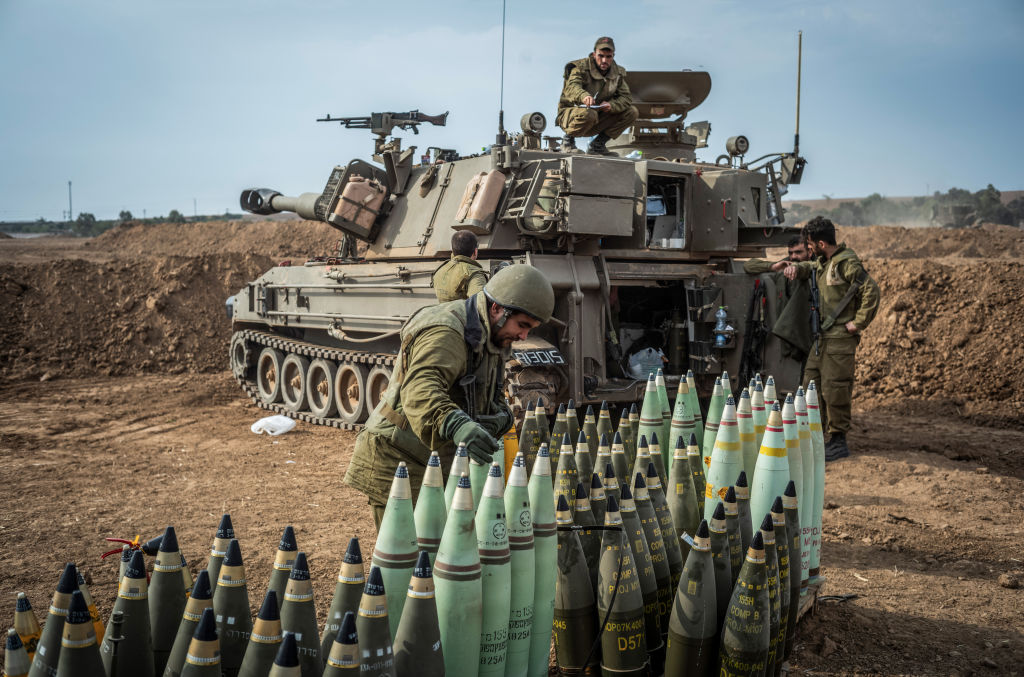
Hamas’ fast-moving mortar teams could prove to be an extreme threat to Israeli forces operating in Gaza itself. This is especially true in any open areas where indirect fires can be employed more easily.
Drones
Unlike the last time Israel entered Gaza, drones have become ubiquitous on the battlefield as we have seen repeatedly in Ukraine.
This time around, Hamas will be able to use “a full spectrum of drones—from military grade suicide drones to commercial, off-the-shelf quadcopters modified to drop munitions. Hamas released video of its forces using drones during its recent attack and showing larger drones in its inventory that are similar to Iranian ones used by Russian forces in Ukraine. As a rapidly growing feature of warfare, recent urban battles have incorporated drones more to a much greater degree than anything the IDF has faced before.”
The first use of off-the-shelf and home-built weaponized drones on a massive scale occurred in the battle of Mosul in 2016-2017 with devastating results. The parallels between the two combat environments are glaring, but this time the employment of low-end drones against infantry is a far more mature tactic and capability set. Hamas will be trained and ready to employ whatever they have in the dense urban environment that is largely their home turf. Israel’s prowess in electronic warfare and counter-drone capabilities will be put to the absolute test during this operation.
Tunnels
There are hundreds of tunnels, dubbed the “Gaza Metro,” stretching for scores of miles. After Operation Guardian of the Walls in 2021, Israeli forces reportedly destroyed 60 miles of tunnels in Gaza.
Hamas, meanwhile, claimed that it had 300 miles of tunnels, the BBC reported.
“There is likely what amounts to an entire city of tunnels and bunkers under Gaza’s surface,” Spencer wrote. “As it did in 2014, Hamas should be expected to use tunnels offensively to maneuver attackers underground, keeping them both hidden and protected, to conduct surprise attacks. The group will also use them defensively to move between fighting positions to avoid IDF firepower and ground forces.”
In a very insightful Twitter thread, Colin P. Clarke, director of research for the Soufan Group, pointed out the many challenges Israel will face battling Hamas in the Gaza Metro, including mines and booby traps (more on those later) and the difficult decision of using “bunker busting” munitions in a densely populated urban area.
In its Friday order for civilians in Gaza to evacuate their homes ahead of the pending incursion, the IDF noted in particular the challenges posed by the Hamas underground networks.
“Hamas terrorists are hiding in Gaza City inside tunnels underneath houses and inside buildings populated with innocent Gazan civilians,” the IDF said. “Civilians of Gaza City, evacuate south for your own safety and the safety of your families and distance yourself from Hamas terrorists who are using you as human shields.”
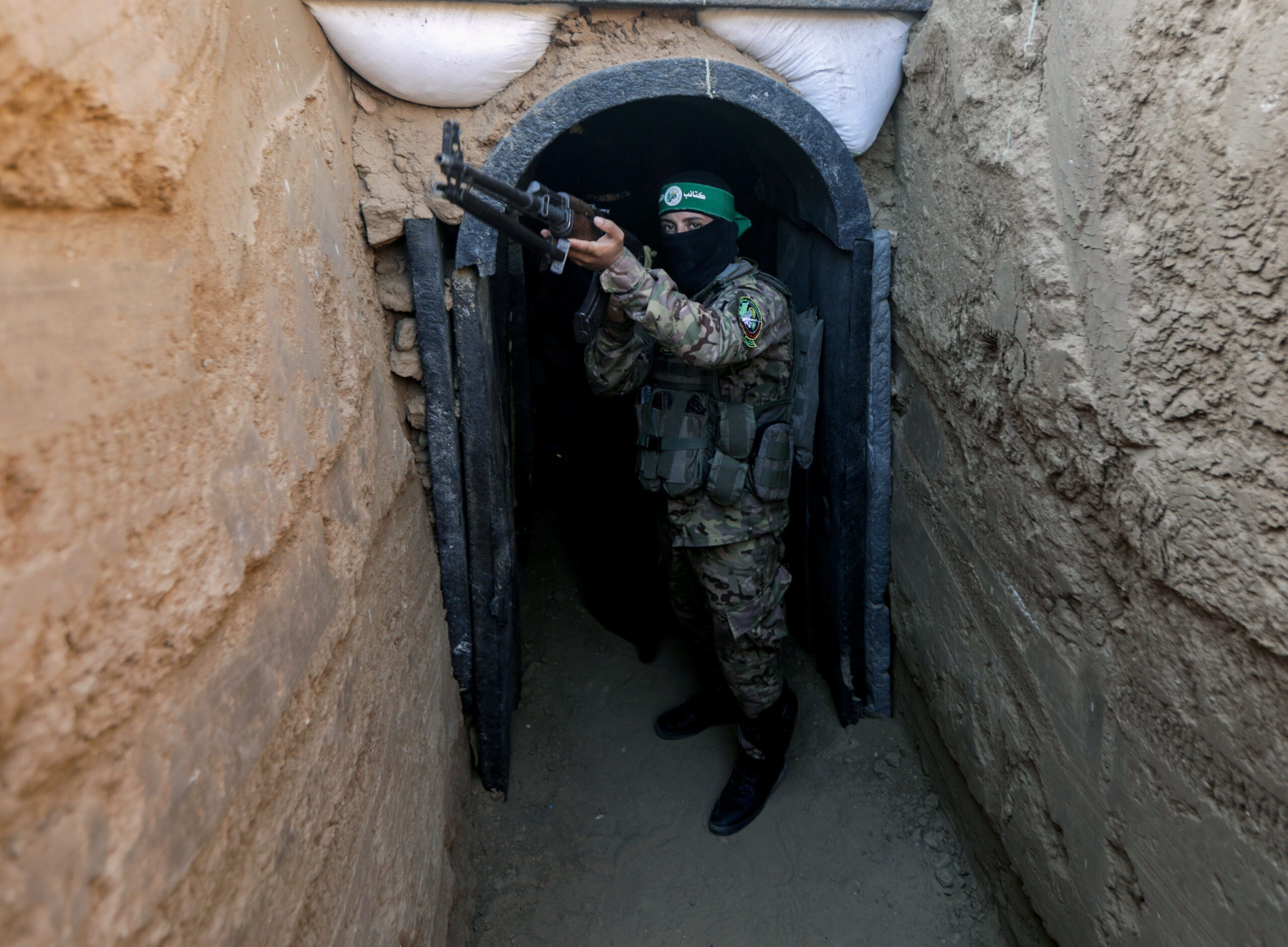
Tunnels give combatants a seemingly magical ability to pop up out of nowhere just to quickly disappear again. Just finding the tunnels themselves can be a huge challenge and destroying all of them in such a way they can’t easily be reconstituted is another major undertaking.
In the 2017 Battle of Mosul, “ISIS spent two years digging tunnels, which they used to move between buildings and fighting positions,” Spencer wrote. “This greatly contributed to the fact that it took over one hundred thousand Iraqi security forces nine months and required destroying most of the city to clear it of enemy forces.”

Subterranean combat is extremely perilous. With movements totally restricted — a fatal funnel may be around every turn — no support from the air and limited communications, unique tactics are needed not just to succeed, but to survive when fighting in such conditions. The enemy has a massive upper hand as they know the underground layout and are prepared to capitalize on every advantage that it offers.
The U.S. military has put a new emphasis on fighting in tunnels and other underground spaces to the point that they want to build a highly elaborate complex just for its special operators to train to fight in this uniquely lethal environment.
Anti-Tank Missiles And RPGs
Hamas has a deep stock of highly mobile anti-tank weapons, from more advanced anti-tank guided missiles to rocket-propelled grenades. These weapons will be among the most concerning and most plentiful threats Israeli infantry will be confronted with as they make their way through Gaza alongside armored vehicles and tanks.
While Israel pioneered active protection systems capable of knocking down incoming RPGs and ATGMs for its armor, and they proved effective in prior forays into Gaza, they have limitations. In particular, they can pose a deadly danger to dismounted infantry operating around the vehicle. The sensor systems they rely on can also malfunction, break down, or get confused in dense urban environments.


In 2014, IDF vehicles “faced Hamas firing a wide range of antitank guided missiles, such as Malyutkas, Konkurs, Fagots, and Kornets, as well as direct-fire rocket-propelled grenades, including RPG-7s and the modern and capable RPG-29s,” Spencer said. “Both these types and other, modern versions of man-portable but effective weapons are easy to transport and conceal in the narrow and confined fighting positions of urban terrain.”
During the 2004 Second Battle of Fallujah, “a single US battalion involved in penetrating the enemy defenses lost six M1A2 Abrams tanks (mostly mobility kills) to RPG volley fire,” Spencer wrote.

“In the 2022 Battle of Mariupol, just a few thousand defenders used Kornets, NLAWs, Javelin, rocket-propelled grenades, and other antitank guided missiles to destroy many Russian vehicles, hold down over 12,000 Russians soldiers, and ultimately hold their city for over 80 days.”
Regardless, there will be armor losses, with the question being how large will those losses be. And these weapons are also a grave threat to infantry themselves, too.
Strongpoints, Snipers, And Ambushes
Hamas will seek to use a defense relying on close combat, strongpoints (heavy buildings made of concrete and steel and often with basements and tunnels), and snipers.
“In 2014, Hamas deployed between 2,500 and 3,500 fighters to defend Gaza using rockets, mortars, antitank guided missiles, rocket-propelled grenades, machine guns, and small arms mostly from protected strongpoints.”
The rubble left behind by Israeli air strikes will provide many Hamas strongpoints.

History has proven how challenging this is for the offensive operation.
A single building as a strongpoint “can take days, weeks, or months to clear,” Spencer wrote. “In the 1942 Battle of Stalingrad a four-story building, known as Pavlov’s House, took a division of Germans over 58 days to clear. In the more recent 2017 Battle of Marawi, multiple single buildings took the Philippine military days and in some cases weeks to clear. The IDF should expect to face both strongpoints and snipers once again—both of which have historically been major challenges for attacking militaries.”
This video below, by the U.S. Army University Press, shows just how difficult it can be to clear out troops in well-defended strongholds like those the Germans encountered in Stalingrad.

With Israeli forces moving through tight urban areas, and ‘fatal funnels’ abound due to the complex environment, as well as roadblocks and other obstacles Hamas will surely erect, ambushes will be among the group’s top tactics.
Many of the aforementioned elements feed into ambush tactics and cutting off small groups of Israeli forces from their comrades via ambushes, which will be a critical goal. Considering how dense and complex the urban terrain is in Gaza, ambushes can occur virtually anywhere. Hamas has had years to plan exactly where they offer the greatest tactical advantage and Israeli Defense Forces have also spent years pouring over intel to identify what areas to avoid at all costs due to risk of ambush, but plans usually don’t survive enemy contact. This is very likely to be the case when it comes to Hamas’ ambush tactics as IDF forces push into Gaza.
Roadside Bombs, Mines, Booby Traps, And Suicide Bombers
There is also the massive issue of mines, booby traps, and improvised explosive devices that Hamas could set up in and around the most likely approaches Israel will take and as the conflict plays out.
As Israel launches more airstrikes and artillery barrages into Gaza, the resulting rubble, destroyed vehicles, and other detritus of war littering the streets and alleys will make perfect places to plant destructive devices that can kill troops, damage or destroy vehicles, and add additional time to any assault effort. Buried anti-armor mines may also be a real concern — even for heavy armor — if they have been supplied to Hamas.
With fighting below, at, and high above ground level, booby traps will be a bewildering concern, especially when it comes to high-value areas and targets that the IDF will be looking to raid. The possibility that false intel will result in IDF personnel walking into a trap-laden with explosives will be a challenge to contend with.
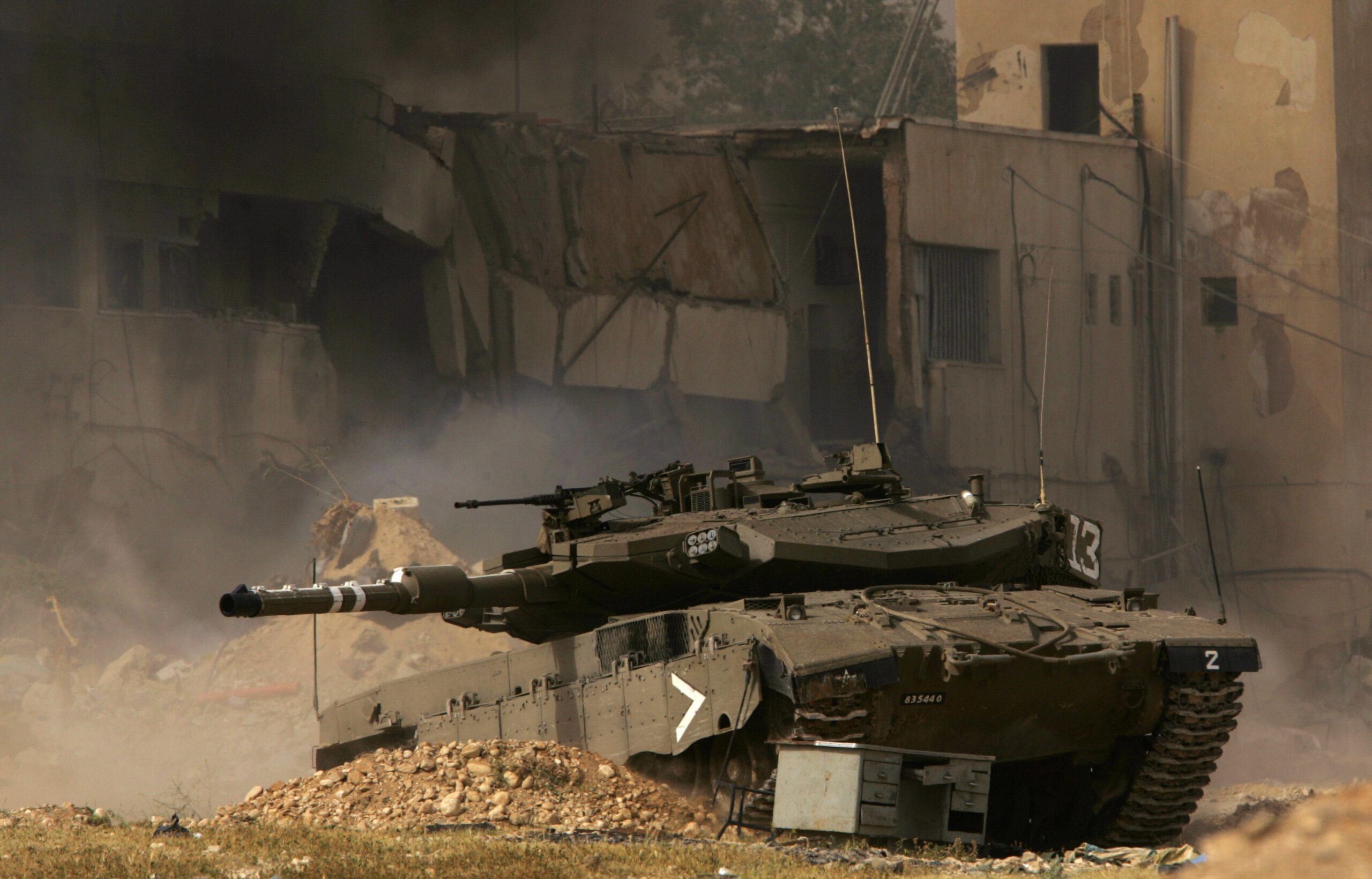
The fact that these traps can include suicide bombers makes things even more of a challenge, and those suicide bombers can seem to be innocent civilians or even hostages. Depending on how many civilians leave the areas the IDF enters, the threat of suicide bombers can vary. If few leave and the area is filled with civilians, anyone can be carrying a very deadly device, even children.
As we reported in the past, the 2017 battle for Mosul highlighted how improvised explosive devices (IEDs) and booby traps, in particular, made Iraq’s battle-hardened Golden Division pay dearly for every inch of territory it took. Especially deadly were vehicle-borne IEDs (VBIED) driven by suicide bombers that were essentially street-level guided missiles.
Human Shields
Human shields are maybe the top tactical challenge to overcome.
“It is well known that Hamas uses civilians as human shields,” Spencer wrote. “By doing so, the group is effectively engaging in what scholars have called lawfare, using the law of armed conflict and international humanitarian law—specifically their provisions on the protection of noncombatants—to restrict the actions an attacking military force can take in operations.”
Hamas “has cynically used Palestinian residents of Gaza for this purpose in the past—establishing weapons caches and rocket firing points in densely populated areas.” However, “they will likely also seek to use” the scores of noncombatants kidnapped over the weekend as additional leverage and cover.
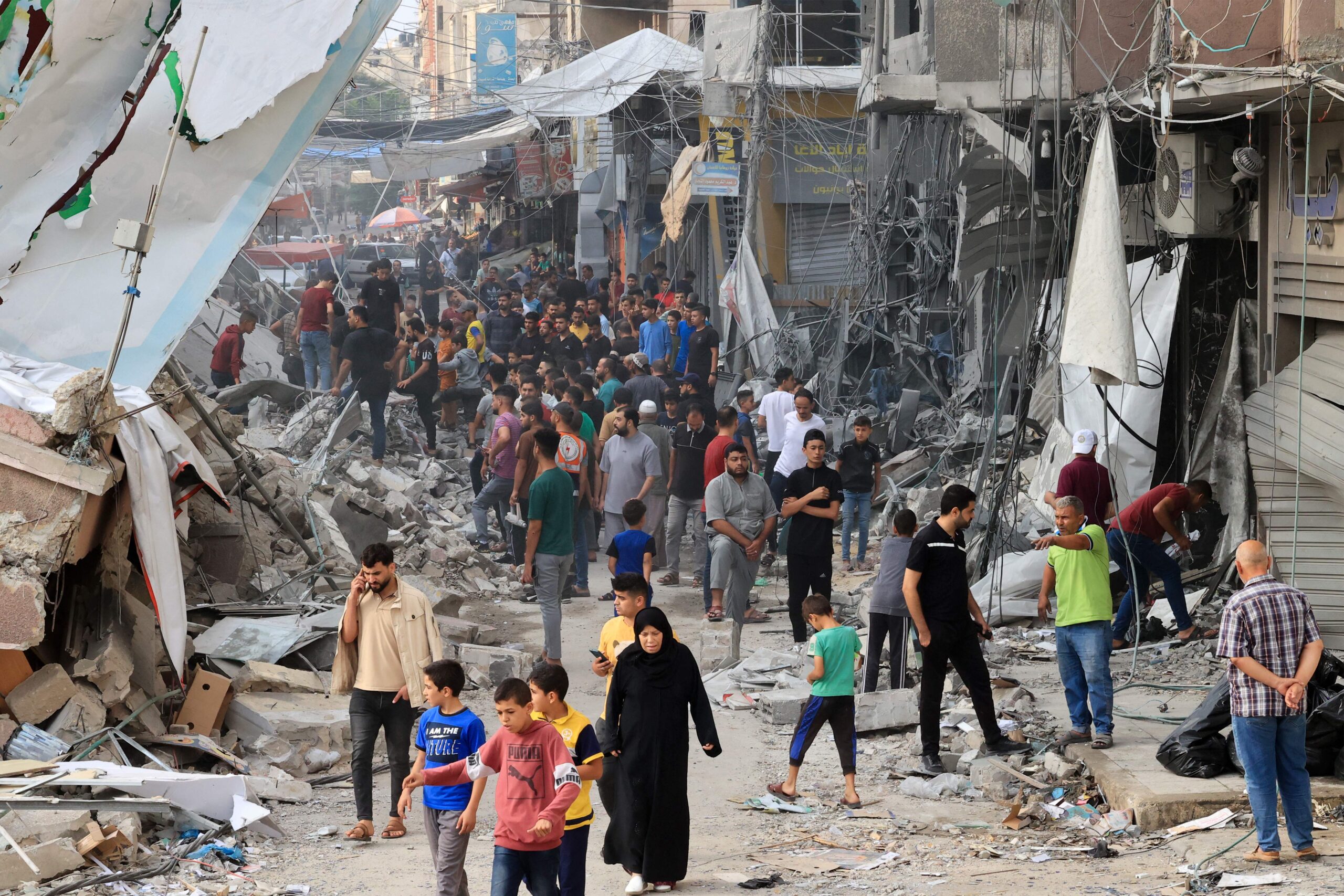
Some civilians may simply not choose to evacuate areas the IDF is entering — or they may not evacuate because there is nowhere to go and services in Gaza have ground to a halt. This means that human shields may blur with the realities of fighting amongst a populace that has nowhere to flee to.
The Hostage Factor
Hamas took scores of hostages during its bloody raid on Israel. That includes what’s likely “less than a handful” of Americans, White House National Security Council spokesman John Kirby acknowledged on Thursday without specifying how many.
Hamas, as we previously reported, has threatened to broadcast one Israeli civilian hostage execution for every time a home in Gaza is struck without warning. While that hasn’t happened yet, the Israeli war cabinet is going through a gut-wrenching decision. Many of the hostages are likely spread out across Gaza, in hard-to-reach and well-defended places, guarded by people who are probably willing to die, along with the hostages, for the cause.
Hostage rescues, however, are among the most difficult military operations even in uncontested terrain. Highly dense urban environments that have militant fighters mixed in with the population prove a nightmare for military forces. Oh, and there is absolutely no element of surprise to be had.
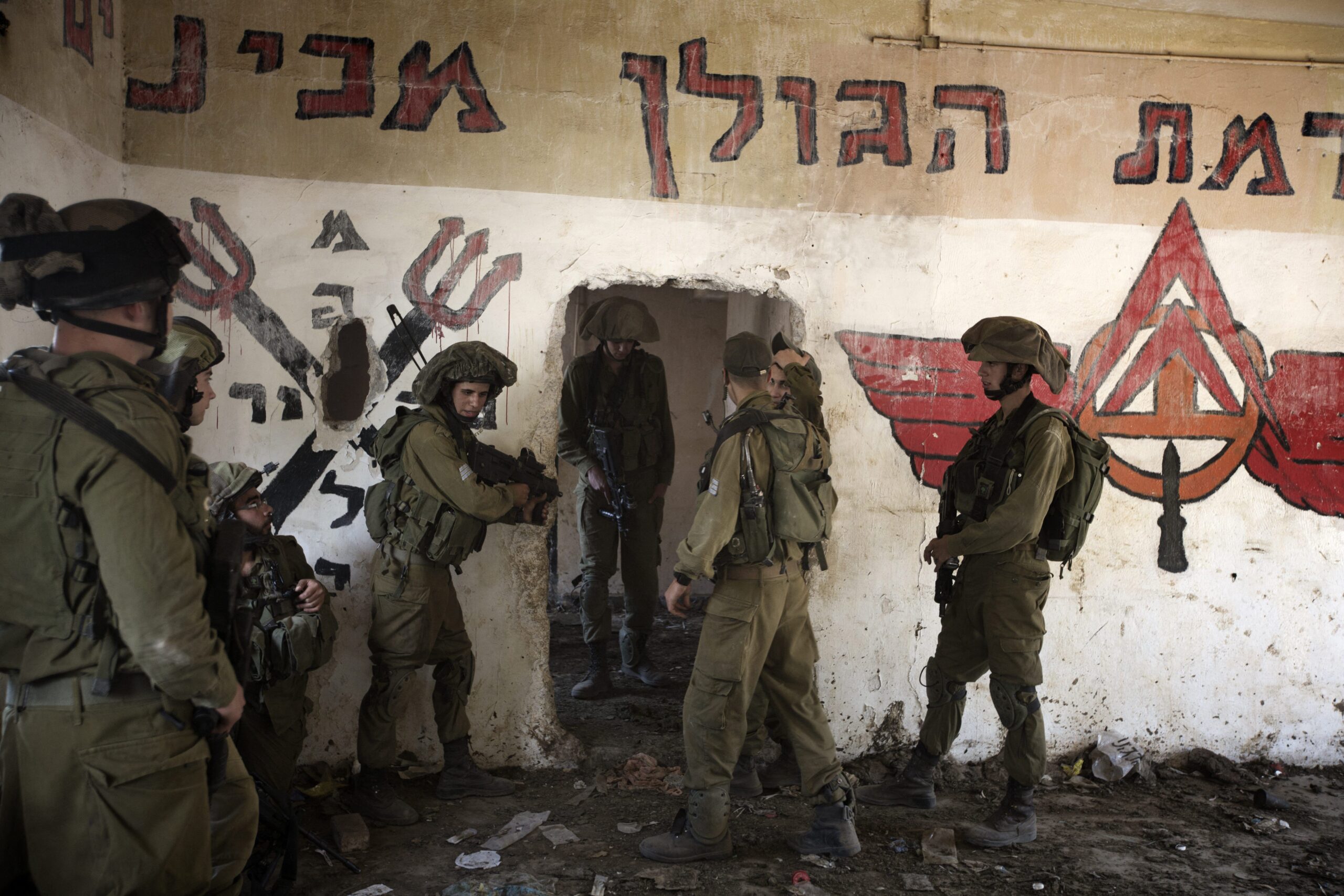
Now, executing those types of operations as part of a much broader push into Gaza supported by mechanized infantry can make things easier for hostage rescue teams and in other ways harder. For the hostages, on the other hand, it could prove deadly depending on whether Hamas will follow through with its execution threats. But a major war in Gaza will put hostages at risk as it is impossible to know where they all are. Yet at this point, the only way to have a shot at saving many of them may be with the support of a full-on invasion.
We will have more about the challenges of hostage rescue under these unique and extremely high-risk circumstances in a feature that should be published very soon.
Humanitarian Crisis In A Box
While a military operation is unfolding, with all the violence and destruction that goes with it, it’s hard not to imagine an absolutely dire humanitarian crisis will already begin to unfold even in areas not directly affected by fighting on the ground.
With no water or electricity, and pretty much all other supplies and services provided for daily life grinding to a halt, over two million people in Gaza are going to descend into a very dark place regardless of an invasion. And in the case of Gaza, which is basically a big locked-in rectangle with controlled access points, with Egypt being the main relief valve, there will be nowhere to migrate to.
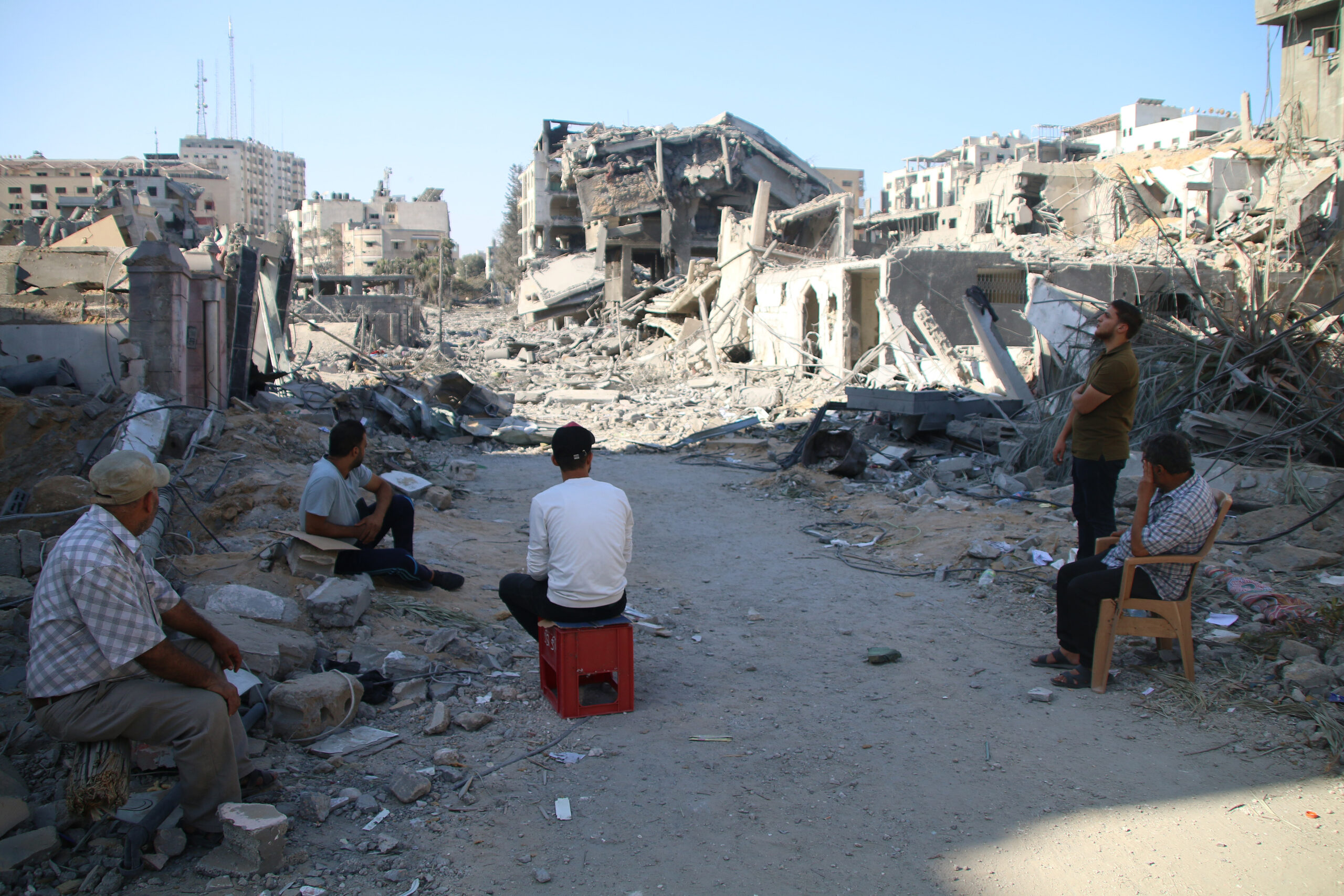
Once again, this is not even factoring in the widespread destruction that a ground assault will bring, with so many people being packed into a small area without any services to support them.
How exactly this will play out is unknown, but it could deeply impact a ground operation into Gaza and how that operation is viewed beyond Israel’s borders.
Overcoming The Odds
To overcome some of these challenges, Israel will have to do several things, according to Spencer and two U.S. armor experts we interviewed.
The IDF will need to be able to withstand what will likely be a significant amount of casualties. It needs to have plenty of ammunition. It will also need to ensure that it fights in a way that protects the armor that will lead the attacks through combined arms maneuvers with the infantry.
The IDF said it lost 66 soldiers during the 2014 Operation Protective Edge.
“Given the scale of the attacks Hamas has launched in recent days, Israeli objectives are likely to be even more comprehensive than they were nine years ago,” Spencer wrote.
An operation of this scale will last weeks, if not months, so a steady supply of ammunition for Israel’s tanks and other armor, infantry, and air defenses is critical, according to Spencer.
“Urban warfare can require four times as much ammunition, or even more, as combat in other environments. To overcome the tactical challenges described above, the IDF will require an abundance of ammunition—not only small arms ammunition, but also interceptors for air defenses across Israel, precision-guided munitions, active protection system rounds on vehicles, rockets, artillery, mortars, tank rounds and much more.”
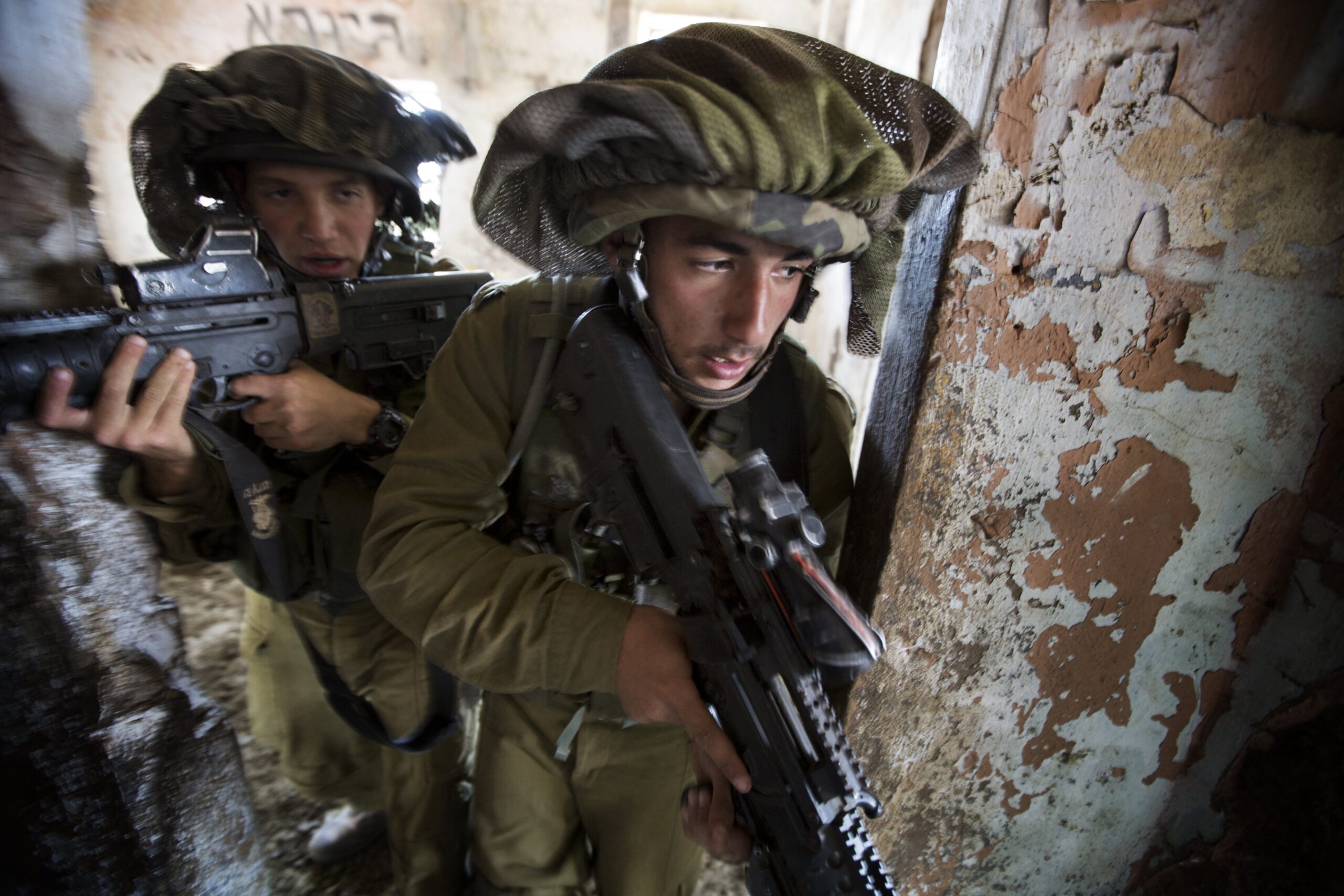
It will also be essential for the infantry to act in close coordination with armor as well as aviation as the IDF fights its way through Gaza, two U.S. armor experts told us.
“Not overreaching their infantry support,” will be key, one expert, speaking on condition of anonymity to discuss operational details, said succinctly.
“This is going to be a truly combined arms operation where the infantry and the armored elements have to work together,” another U.S. armor expert told us, speaking anonymously on the same conditions.
“Tanks can absolutely not go in alone,” said the second expert. “It has to be armor and infantry together where the infantry is walking in front of the tanks to check the alleyways out. Then, when they spot fortified positions, the infantry calls up the tanks.”
Sometimes, that means the tanks will move forward and take the brunt of RPG fire so that the IDF infantry can maneuver into fighting positions and battle through buildings and alleyways to envelop Hamas.
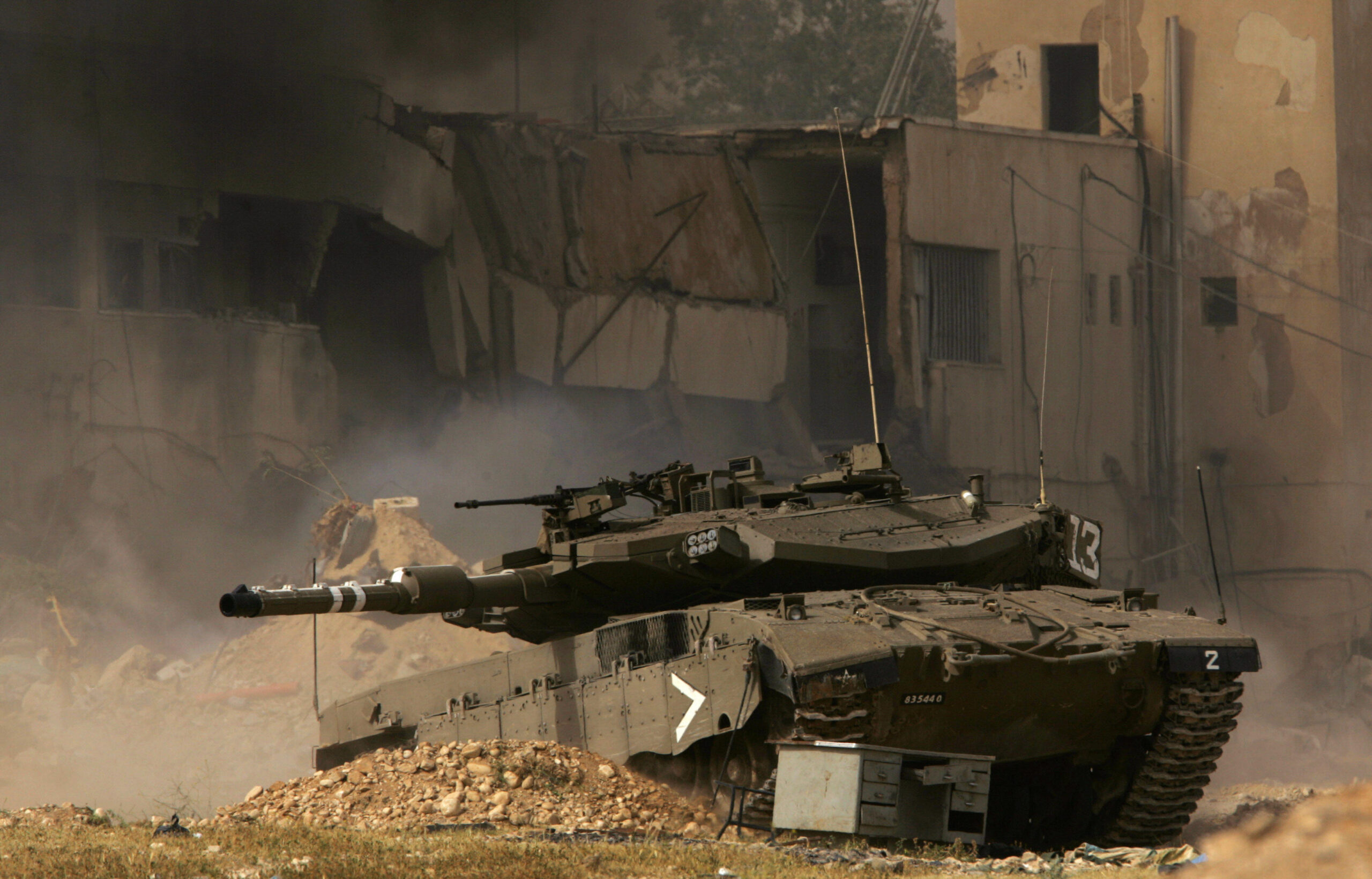
Hamas’ aforementioned large cache of anti-tank weapons will be a huge challenge.
“This fight is going to test the active protective systems on the various armor platforms that the Israelis have,” said that expert.
Adding to the challenges faced by the IDF is that “in an urban environment, mortars and artillery are going to be very difficult to employ accurately,” the expert told us. “That means that they’re going to have to rely on the firepower of their armor and infantry, small arms, crew-served weapons, grenade launchers, and anti-tank missiles in combination with their drones.”
In addition to operating with armor, Israel’s infantry will also operate independently. All these operations will be augmented with special operations forces, like the unit seen in this video below in 2014, storming a building in Gaza.

Gaza also has about 25 miles of shoreline along the Mediterranean Sea, where Israel controls the waters. Any full-scale invasion of Gaza will also involve Israel’s naval forces as well.
Israel’s drone capabilities are an advantage U.S. forces did not have in Fallujah or Sadr City, the expert said.
“We truly never had that at the platoon level or even squad level,” said the expert. In addition, drones “were not well integrated at the company level when we got higher level support.”
Israel, he said “invested a lot into their unmanned aerial systems, down to the squad level, which will give them great advantage.”
In addition, Israel has “robots to be ahead of advancing troops to spot enemy targets, and then make decisions on how they approach those targets.”
Israel has been a leader in exactly these systems, including small unmanned ground vehicles that can scout ahead and drones that are specifically designed to maneuver and even kill inside buildings. You can read more about that very real capability here.

Another key advantage Israel enjoys is supremacy in the skies.
Since it launched Operation Iron Swords, the Israeli Air Force (IAF) has carried out hundreds of sorties against Gaza, mostly with fixed-wing aircraft like F-16s and F-15s. The IAF on Thursday said it dropped 6,000 bombs in just five days on Gaza.
Still, Hamas “has previously claimed to have several types of man-portable air defense systems [MANPADS], such as the SA-7 [Strela], SA-18 [Igla variant], and SA-24 [9K338 Igla-S],” Spencer said.
Video has emerged of Iranian Misagh-1 man-portable air defense systems among items left behind after Hamas raided the Holit kibbutz.
On Friday, Hamas reportedly tried to fire at an IAF F-16.
“The presence of these and other air defense weapons would pose a significant challenge to Israeli airpower, with serious implications for the ground forces who are dependent on having cover from above.”
While that may be true, so far, Israel has lost no aircraft over the course of this war.
Although it could be a humanitarian disaster in the making, Israel’s decision to cut off the supply of fuel to Gaza might work to its benefit in any attack as the lack of electricity means that there is no way to power cell phones, computers, and other electronic devices. That greatly reduces the ability to communicate in and out of Gaza. Command and control and lines of communication will have to rely more on ancient tactics, like couriers, although Hamas is well adapted to those tactics.
In many ways, the outcome of this fight will provide lessons learned about urban warfare for years to come, but it also has the potential to impact military fighting doctrine on many other levels as well.
Yet one thing is certain now, this is going to be a very complex and extremely high-risk operation fraught with pitfalls, and will likely feature a menagerie of threats that even the best technology cannot outright overcome.
Contact the author: howard@thewarzone.com and tyler@thedrive.com
